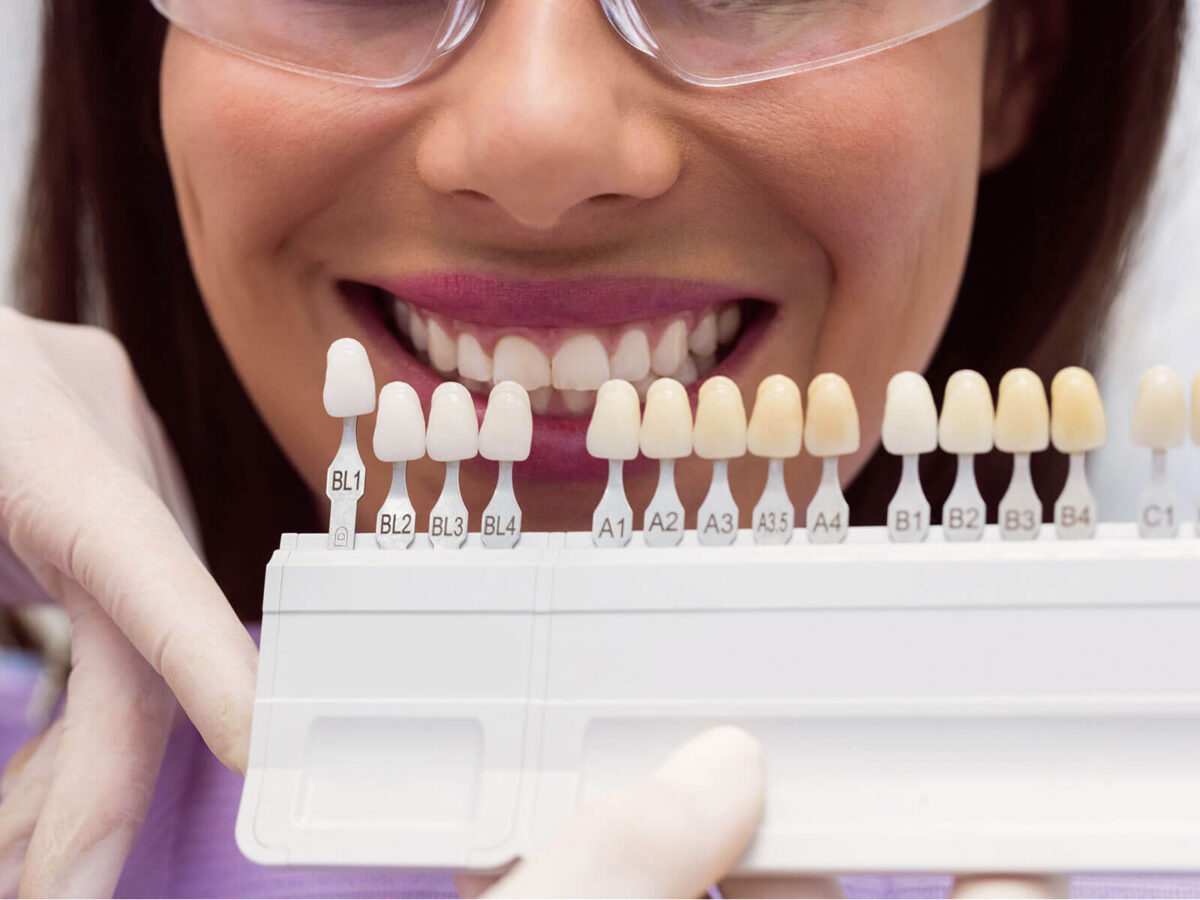Blog
Dental hygiene tips for healthy teeth & gums

All About Porcelain Crowns: Aesthetic And Functional Excellence
Porcelain dental crowns, commonly known as ceramic crowns, have transformed restorative dentistry by combining aesthetic beauty with functional durability. These crowns are well-known for producing natural-looking outcomes while restoring the strength and functionality of damaged or impaired teeth. This comprehensive blog delves into all aspects of porcelain crowns, from their composition and implantation processes to their aesthetic benefits to dental restorations.
All About Porcelain Crowns
1. Porcelain dental Crown Composition:
a. Dental Ceramics: Porcelain crowns are made of dental ceramics, known for their ability to resemble the clarity and color of genuine teeth. Dental ceramics of high grade are chosen for their endurance and cosmetic qualities.
b. Stain-Resistance: Modern porcelain crowns are frequently stain-resistant, allowing them to retain their natural appearance over time. This attribute adds to the durability of the cosmetic benefits they bring.
2. Porcelain dental Crown Indications:
a. Cosmetic Enhancement: Porcelain crowns are frequently utilized for cosmetic objectives, including improving the appearance of teeth with discoloration, chipping, or abnormalities. They mix in with neighboring teeth to create a beautiful and natural grin.
b. Damaged Teeth Restoration: Porcelain crowns restore strength and functionality to teeth with considerable decay, fractures, or big fillings. Porcelain dental crowns encase the entire tooth and provide structural support.
c. Post-Root Canal therapy: Porcelain crowns can be used to protect and strengthen teeth that have had root canal therapy. These crowns aid in the prevention of fracture and additional injury.
3. Benefits of Porcelain Crowns:
a. Aesthetic Excellence: In terms of color, transparency, and texture, porcelain crowns closely resemble natural teeth. Because of their aesthetic perfection, they are recommended for visible portions of the smile.
b. Biocompatibility: The dental ceramics used in porcelain crowns are biocompatible with the oral tissues. This lowers the chance of unwanted responses while also promoting long-term oral health.
c. Durability: High-quality porcelain crowns are long-lasting and can bear biting and chewing forces. They can deliver long-term functional results if adequately cared for.
d. Precision Fit: Porcelain crowns are custom-made to fit perfectly over the prepared tooth. This accuracy improves their functionality and look.
4. Procedures for Placement:
a. Tooth Preparation: The diseased tooth is prepared before a porcelain crown is placed by removing decaying or damaged areas. The crown is sculpted to fit the tooth, ensuring a secure fit.
b. Impressions: Impressions of the prepared tooth are obtained to make a precise mold for the porcelain crown production. These impressions aid in creating a crown that is a perfect fit for the patient’s bite and surrounding teeth.
c. Temporary Crown: A temporary crown may be placed over the prepared tooth while the permanent porcelain crown is created. This temporary crown protects the tooth and preserves its appearance until the permanent repair is ready.
d. Permanent Crown Installation: Once the permanent porcelain crown is complete, it is securely cemented to the prepared tooth with dental cement. The fit is thoroughly evaluated to provide optimal function and appearance.
5. Porcelain Crown Maintenance:
a. Routine Oral Hygiene: Proper oral hygiene practices, including brushing and flossing regularly, are critical for the longevity of porcelain crowns. This reduces plaque formation and potential problems near the crown margins.
b. Avoiding Excessive Force: While porcelain crowns are long-lasting, avoiding excessive force, such as biting on hard things, can help them last longer. Wearing a mouthguard during activities with a risk of impact or injury is recommended.
c. Routine Dental Exams: Schedule frequent dental check-ups so that your dentist can evaluate the condition of the porcelain crown and resolve any issues as soon as possible. Routine examinations add to the restoration’s overall success.
6. Budgetary Considerations:
a. Initial Investment: Porcelain crowns may have a more significant initial cost than other dental restorations. However, the aesthetic and functional benefits frequently outweigh the cost.
b. Long-Term Value: Because porcelain crowns are long-lasting and durable, they provide long-term value by producing consistent and natural-looking results.
Conclusion:
Porcelain crowns are the pinnacle of restorative dentistry, combining aesthetic beauty with functional durability. Their ability to replicate natural teeth makes them an excellent alternative for cosmetic enhancement and tooth replacement. Porcelain crowns help patients’ well-being by offering long-lasting, natural-looking outcomes through precision craftsmanship, cautious placement processes, and routine care. Whether used for cosmetic purposes or to restore functionality, porcelain crowns demonstrate the union of aesthetics and function in modern dental care.
